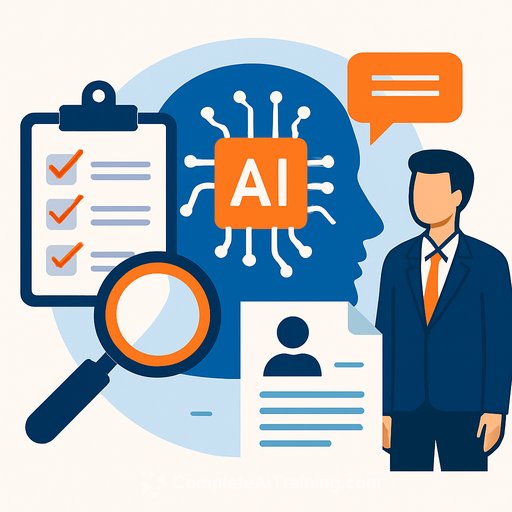Amazon and PwC job cuts signal a new phase of white-collar automation
Amazon cut 14,000 jobs. PwC shed 5,600 roles across accounting and consulting. The message for HR is blunt: AI isn't a side project anymore. It's being embedded in core workflows that used to be safe.
This isn't just about cost. It's about speed, consistency, and a shift in how knowledge work gets done. If your org chart hasn't moved in the past year, AI will move it for you.
What this likely means for HR leaders
- Task-heavy white-collar roles are in scope: bookkeeping, audit prep, reporting, research, client deliverables, internal ops, and support.
- Expect fewer generalists, more hybrid roles: domain expert + automation fluency + QA oversight.
- Reorgs will tie directly to AI adoption timelines and vendor rollouts-HR has to be in those meetings early.
90-day HR action plan
- Run a task-level skills audit: Map roles to tasks, tasks to time spent, and time to automation potential. Focus on recurring, rules-based work.
- Set a redeploy-first policy: Identify at-risk roles and create clear internal pathways into growth areas (RevOps, data, product ops, AI governance).
- Launch targeted reskilling: Prioritize AI-assisted writing, spreadsheet automation, prompt workflows, QA, and data literacy.
- Define AI usage policy: Approvals, data handling, confidentiality, IP, client consent, and quality checks.
- Create an AI governance group: HR, Legal, Security, Finance, and Ops. Decide vendors, controls, and audit cadence.
- Align incentives: Update performance metrics to value accuracy, throughput, and responsible AI use-not just headcount cuts.
- Prep the comms plan: What's changing, why it helps customers, how employees are supported, and where to learn new skills.
- Strengthen manager toolkits: Conversation guides, FAQs, and practical "before/after" task examples for each team.
- Risk and compliance checks: Disparate impact analysis, vendor DPAs, model limitations, and documentation standards.
- Offer humane off-ramps: Internal mobility sprints first; where reductions are necessary, provide strong outplacement and accredited training.
Skills HR should push across white-collar teams
- Prompt workflows and templates for docs, emails, briefs, presentations, and reports.
- Automation basics (RPA/no-code), including triggers, approvals, and data checks.
- Data literacy: cleaning, summarizing, evaluating outputs, and spotting hallucinations or bias.
- Quality assurance: sampling strategies, checklists, redlining, and audit trails.
- Client-facing skills: discovery, outcomes framing, and translating AI output into clear recommendations.
- Risk and security hygiene: access controls, PII handling, model limitations, and vendor oversight.
Redesign roles before you reduce them
Break jobs into tasks. Keep the human where judgment, coordination, and client trust matter. Move repeatable tasks to AI with human-in-the-loop checks.
Pilot with one team, one workflow, one metric. Document the new standard and scale. This protects value while you cut wasted effort.
Measure the right outcomes
- Cost per task and cycle time before vs. after AI.
- Defect and rework rates from QA sampling.
- Internal redeployment rate vs. external exits.
- Learning hours per employee in AI-supported tools.
- Employee trust scores on change, clarity, and support.
- Compliance incidents and vendor audit results.
Legal and ethical guardrails
- Run adverse impact checks where automation influences hiring, performance, or pay decisions.
- Document model use cases, data sources, and known failure modes.
- Use approved vendors with clear data processing agreements and offboarding plans.
- Protect client confidentiality and IP; get explicit consent where needed.
Communication that lands
- Why now: customer expectations, accuracy, and speed-not just cost.
- What changes: tasks, tools, quality standards, and timelines.
- How you're supported: training, coaching, mentors, and internal mobility windows.
- Where to get help: office hours, playbooks, and a single source of truth.
Budget and timeline
- Fund a 12-month plan with quarterly checkpoints; start with two high-volume workflows per function.
- Reserve budget for licenses, training, QA time, and data cleanup-not just software.
- Tie savings to reskilling and redeployment targets to avoid pure headcount-first decisions.
Where to upskill fast
- AI courses by job role for practical, role-specific learning paths.
- Popular AI certifications to standardize baseline capability across teams.
Further reading
- WEF: Future of Jobs for macro trends in task change and skills demand.
- OECD: AI and employment for research on automation exposure and policy responses.
The takeaway for HR: treat AI like a new operating system for white-collar work. Rebuild roles around it, move people into higher-value work, and measure outcomes with discipline. If you delay, the reorg will happen to you, not with you.
Your membership also unlocks:






